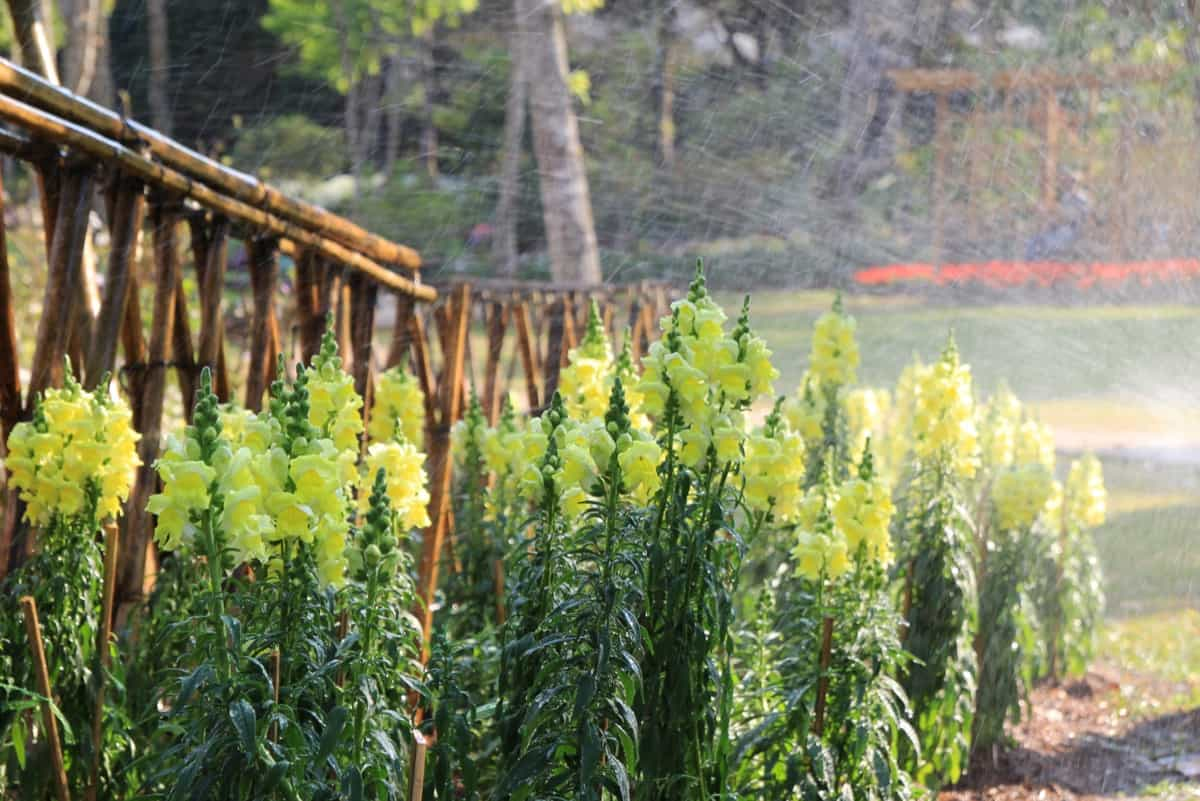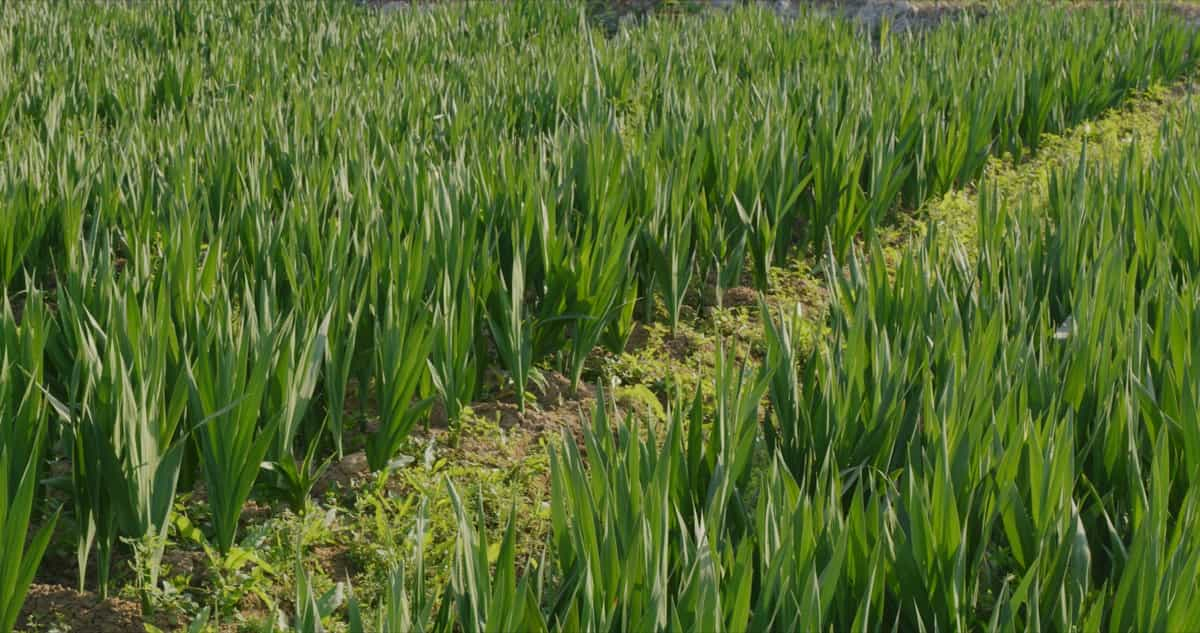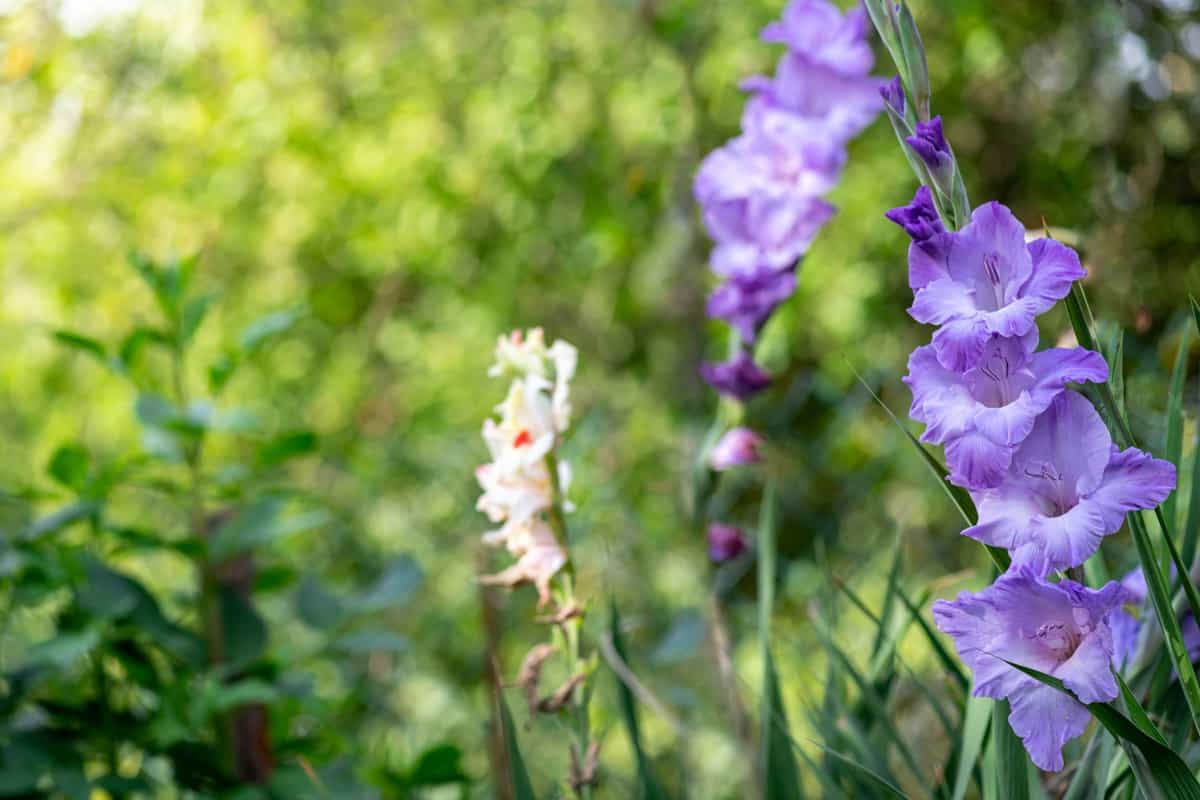Welcome to our blog on common Gladiolus plant pests and control! This article will explore the causal organisms, damage symptoms, spread, treatment options, prevention strategies, and management techniques for these pests. Join us as we provide reliable information on protecting your gladiolus plants and ensuring a healthy yield. Let’s dive in!

Gladiolus is a perennial herb in the Iridaceae family, native to South Africa. This group of plants is characterized by its tall and erect stems growing 2 to 6 feet tall, fan-shaped leaves, and vibrant, showy flowers. The flowers of Gladiolus plants are composed of six petals, known as tepals, which exhibit a wide range of colors and patterns. The plants are known for their versatility and adaptability, able to grow in various soil types and climates. The scientific characteristics of the gladiolus plant and its aesthetic appeal make it a beloved choice among gardeners and flower enthusiasts.
List of Ten Major and Common Pests of Gladiolus
- Thrips Pest: Causes damage by sucking plant sap and transmitting viral diseases, leading to defoliation and reduced flower production.
- Aphids Pest: Causes chlorosis, wilting, and distorted growth, resulting in yellowing and plant death.
- Spider Mites Pest: Causes stippling, discoloration, and webbing on the foliage due to feeding on lower leaf surfaces.
- Gladiolus Thrips Pest: Causes silvering or streaking on the foliage and deformed flowers, damaging the foliage.
- Gladiolus Gall Midge Pest: Their larvae burrow into gladiolus corms causing gall-like swellings and damage to the growing points.
- Slugs and Snails Pest: They feed on the leaves and stems of gladiolus plants, causing irregular holes in the foliage.
- Gladiolus Moth Pest: Their larvae feed on the corms of gladiolus plants, causing decay, softening, and discoloration.
- Gladiolus Spider Worm Pest: The larvae of this moth species tunnel into the gladiolus corms, causing internal damage and decay.
- Cutworms Pest: Their larvae damage gladiolus plants by chewing through stems at the soil line, causing wilting and plant collapse.
- Wireworms Pest: Wireworms are the larvae of click beetles. They feed on gladiolus corms and roots, causing stunted growth, wilting, and reduced vigor.
How to Identify and Treat Gladiolus Pests
Thrips Pest Control in Gladiolus
- Causal Organism: Thrips tabaci
- Symptoms: Infested plants show silvery or brownish feeding scars, discolored leaves, deformed flowers, bronzing of bulbs, and scars on corms. They become yellow and develop a brownish appearance.
- Favorable Conditions: They prefer warm and dry conditions of 20-30 °C, weeds, overcrowding, and finely textured leaf surfaces for feeding.
- Treatment: Spray pyrethroids, imidacloprid, or spinosad. Practice spacing, mulching, and sanitation. Use beneficial insects such as mites (Amblyseius cucumeris) and wasps (Encarsia formosa) to control the pest.
Aphids Pest Control in Gladiolus
- Causal Organism: Aphis spp.
- Symptoms: Infested plants show curling, chlorosis, wilting, deformed flowers, and excretion of sticky, sugary honeydew. The honeydew serves as a medium for the growth of black sooty mold.
- Favorable Conditions: They prefer warm and humid environments of 21-27 °C, tender, succulent plant tissues, and crowded plantations.
- Treatment: Spray insecticidal soaps, neem oil, imidacloprid, and cypermethrin. Practice spacing, sanitation, regular monitoring, and use reflective mulch.
Red Spider Mite Pest Control in Gladiolus
- Causal Organism: Tetranychus urticae
- Symptoms: Infested leaves show yellowing and bronzing, webbing, stippling, curling, and distortion and appear mottled or speckled with spots. They suck the sap from gladiolus leaves, and their webs serve as protective shelters.
- Favorable Conditions: They prefer areas with warm, arid, and dry weather conditions of 27-32 °C, overcrowded fields, and monoculture.
- Treatment: Spray insecticidal soaps, bifenazate, fenazaquin, neem oil, acephate, and spirotetramat. Practice crop rotation and companion planting.
In case you missed it: How to Treat Paddy Diseases: Causes, Symptoms, Disease Cycle, and Control

Gladiolus Thrips Pest Control in Gladiolus
- Causal Organism: Taeniothrips simplex
- Symptoms: Infested plants show leaf curling, distortion, silver-gray appearance, bud deformation, flower discoloration, scarring on petals, and frass. The frass appears as tiny black specks or droplets on the leaves and flowers.
- Favorable Conditions: They prefer warm and dry environments of 20-30 °C, crowded areas, and weeds for reproduction.
- Treatment: Spray bifenthrin, malathion, and imidacloprid. Monitor the plants regularly and maintain plant nutrition. Use fine-meshed netting or row covers to create a physical barrier around the plants.
Gladiolus Gall Midge Pest Control in Gladiolus
- Causal Organism: Contarinia spp.
- Symptoms: The characteristic damage is the formation of galls on the stem’s corms, cormels, and lower parts. They are usually soft and spongy and may have a brown or reddish coloration. Infested plants show leaf wilting, yellowing, and premature bud drop.
- Favorable Conditions: They prefer areas with warm and humid weather of 20-30 °C, stressed plants, and high-density planting for reproduction and survival.
- Treatment and Management: Spray imidacloprid or acetamiprid. Practice sanitation and crop rotation, and regularly monitor the plants using yellow sticky traps.
Slugs and Snails Pest Control in Gladiolus
- Causal Organism: Gastropoda spp.
- Symptoms: The distinctive symptom is chewed edges on the leaves, resulting in a tattered appearance. They produce a slimy mucus trail on leaves, stems, and soil surfaces. Infested plants show damaged flowers, silvery trails, and buds.
- Favorable Conditions: They prefer cool and humid environments of 10-21 °C, shady areas, and organic matter.
- Treatment and Management: Spray metaldehyde or methiocarb. Practice manual handpicking and dropping it into a soap solution. Use physical barriers and iron phosphate baits.
Gladiolus Moth Pest Control in Gladiolus
- Causal Organism: Gnorimoschema spp
- Symptoms: The characteristic symptom is that larvae create tunnels or mines in the leaves, giving a skeletonized leaves appearance. Infested plants show leaf yellowing, tattered or ragged appearance, and distorted flower spikes.
- Favorable Conditions: They prefer warm and humid 21-27 °C environments and suitable breeding sites such as weeds, grasses, and other vegetation.
- Treatment and Management: Spray permethrin or cypermethrin. Practice sanitation, crop rotation, monitoring, handpicking, and destroying adult moths or larvae. Release natural predators and parasites such as certain wasp species or predatory beetles.
Gladiolus Spider Worm Pest Control in Gladiolus
- Causal Organism: Elasmopalpus lignosellus
- Symptoms: The characteristic symptom is the tunneling of larvae into the corms. Infested plants show leaf chlorosis, wilting, corm decay, stunted growth, and reduced flower production.
- Favorable Conditions: They prefer warm, moist, and saturated soils of 21-32 °C, stressed plants, and alternative hosts like weeds.
- Treatment and Management: Spray bifenthrin, permethrin, or deltamethrin. Practice soil solarization, sanitation, crop rotation, and monitoring. Use natural predators, such as parasitic wasps.
Cutworms Pest Control in Gladiolus
- Causal Organism: Agrotis and Euxoa spp.
- Symptoms: The characteristic feature is the severing of young plants by larvae just below the soil surface. Infested plants show leaf defoliation, wilting, deformed seedlings, and small burrowing holes in the soil.
- Favorable Conditions: They prefer mildly warm and moist soils of 10-30 °C for egg laying, and dense vegetation covers such as weeds or grasses, crop residues,
- Treatment and Management: Spray Bt-based insecticides, carbaryl, permethrin, chlorpyrifos, and spinosad. Practice tillage, handpicking, and crop rotation. Use trap crops such as grasses or legumes, physical barriers, and biocontrol nematodes like Steinernema spp and Heterorhabditis spp.
Wireworms Pest Control in Gladiolus
- Causal Organism: Agriotes lineatus, Agriotes obscurus, and Agriotes sputator.
- Symptoms: They primarily feed on underground plant parts. Infested plants show root decay, tuber rot, and soil tunneling symptoms. Infested seeds may fail to sprout, resulting in patchy or uneven plant stands.
- Favorable Conditions: They prefer warm and moist soils of 15-25 °C for active feeding, high soil organic matter, and alternative hosts like weeds.
- Treatment and Management: Spray imidacloprid, chlorpyrifos, or carbaryl. Release nematodes like Steinernema feltiae and Heterorhabditis bacteriophora, natural predators like ground beetles and rove beetles. Practice tillage, fallowing of land, and removing crop residues.
In case you missed it: 10 Common Lily Plant Damaging Pests: Symptoms, Treatment, Prevention, and Management

Conclusion
Some major pests affecting gladiolus plants include thrips, aphids, red spider mites, gladiolus thrips, gladiolus gall midges, slugs and snails, gladiolus moth, gladiolus spider worm, cutworms, and wireworm pests. Various organisms cause these pests and exhibit specific symptoms, modes of spread, and management approaches.
- Beneficial Insects in Pest Management
- Natural Solutions for Pest Control in Flower Gardens
- Types of Fungicides Used in Agriculture
- Common Issues in the Fruit Development Stage of Pomegranate Farming
- Fruit Development Issues in Papaya: Easy Solutions and Treatment
- Soil-Borne Diseases and How to Protect Your Plants
- Practices to Prevent Disease Spread in the Garden
- From Wilted to Thriving: How to Treat Root Rot Naturally in Houseplants
- Natural Remedies to Cure Brown Spots on Fig Tree Leaves